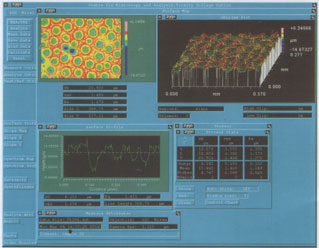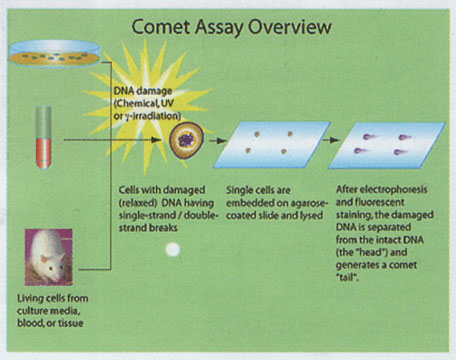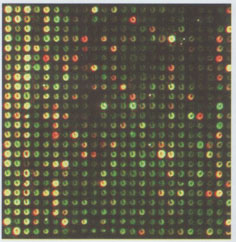 Athlone Institute of Technology's longstanding tradition and expertise in the complementary niche
areas of polymer science/engineering and toxicology led to the establishment of the Centre for
Biopolymer & Biomolecular Research (CBBR) in 2000. The CBBR has recently relocated to a new
suite of laboratories in the Midlands Innovation & Research Centre (MIRC) on the East Campus.
Athlone Institute of Technology's longstanding tradition and expertise in the complementary niche
areas of polymer science/engineering and toxicology led to the establishment of the Centre for
Biopolymer & Biomolecular Research (CBBR) in 2000. The CBBR has recently relocated to a new
suite of laboratories in the Midlands Innovation & Research Centre (MIRC) on the East Campus.
Underpinning the research activities of the centre is state of the art equipment that support
biomaterial synthesis, thermal analysis (modulated differential scanning calorimeter, ;<-thermal
analyser, dynamic mechanical thermal analyser), impedance spectrometry and rheometry. All in
addition to gene expression microarray technology, real-time quantitative PCR, automated DNA
fragment analysis, multilabel plate analysers, protein purification and Comet assay image analysis
capabilities. Significantly, the procurement of such equipment has been facilitated by AIT's success
in attracting > � 6m in research funding in life science/polymer over the past number of years.
 Figure 1 A white light profilometry scan for a Thermoplastic Elastomer-g-Hydrogel illustrating 2D
and 3D surface profiles as well as the PV value, 15.44 �m and the RMS parameter, 1.468�m
Biopolymer research at CBBR has focused on the synthesis and characterisation of biomaterials for
a variety of medical/healthcare applications. Biomaterials have been synthesised for use in tissue
engineering, drug delivery, coatings and wound care technology among others. Amajorfocus is the
development of 'smart' polymeric materials: materials that can change their structure and function
in response to an external stimulus, such as pH, temperature, ionic strength, electrical stimulus
etc. One major class of biomaterial that has been studied extensively at AIT is the hydrogel. They
have been widely used in applications such as controlled drug release because of their
biocompatibility with the human body and also because they resemble natural living tissue more than
any other class of synthetic biomaterial.
Figure 1 A white light profilometry scan for a Thermoplastic Elastomer-g-Hydrogel illustrating 2D
and 3D surface profiles as well as the PV value, 15.44 �m and the RMS parameter, 1.468�m
Biopolymer research at CBBR has focused on the synthesis and characterisation of biomaterials for
a variety of medical/healthcare applications. Biomaterials have been synthesised for use in tissue
engineering, drug delivery, coatings and wound care technology among others. Amajorfocus is the
development of 'smart' polymeric materials: materials that can change their structure and function
in response to an external stimulus, such as pH, temperature, ionic strength, electrical stimulus
etc. One major class of biomaterial that has been studied extensively at AIT is the hydrogel. They
have been widely used in applications such as controlled drug release because of their
biocompatibility with the human body and also because they resemble natural living tissue more than
any other class of synthetic biomaterial.
 Figure 2. Basic single cell gel electrophoresis (SCGE) Comet assay schematic
Biomolecular research at CBBR to date has focussed on the development of high throughput
screening assays for the detection of DNA damage and mutation induction based upon such techniques
as the Comet assay, automated fragment analysis and real-time PCR. DNA microarray technology has
also been employed in the detection of gene expression changes following cellular exposure to
various polymeric materials. Moreover, a battery of cell and molecular screening assays including
reporter- gene systems are currently under development with partner laboratories for the detection
and characterisation of endocrine disrupters, which of course include a range of chemicals used in
the plastics industry such as phthalates and bisphenol-A. From a tissue engineering perspective
cytoskeletal proteins produced via a novel cell-free expression system are currently under
investigation for use as scaffolds, while traditional colorimetric-based viability assays and
regulatory-approved genotoxicity tests are used on a routine basis to evaluate the biocompatibility
of various polymeric materials. The CBBR has developed working tissue models of skin, liver and
vascular systems for toxicological analysis.
Figure 2. Basic single cell gel electrophoresis (SCGE) Comet assay schematic
Biomolecular research at CBBR to date has focussed on the development of high throughput
screening assays for the detection of DNA damage and mutation induction based upon such techniques
as the Comet assay, automated fragment analysis and real-time PCR. DNA microarray technology has
also been employed in the detection of gene expression changes following cellular exposure to
various polymeric materials. Moreover, a battery of cell and molecular screening assays including
reporter- gene systems are currently under development with partner laboratories for the detection
and characterisation of endocrine disrupters, which of course include a range of chemicals used in
the plastics industry such as phthalates and bisphenol-A. From a tissue engineering perspective
cytoskeletal proteins produced via a novel cell-free expression system are currently under
investigation for use as scaffolds, while traditional colorimetric-based viability assays and
regulatory-approved genotoxicity tests are used on a routine basis to evaluate the biocompatibility
of various polymeric materials. The CBBR has developed working tissue models of skin, liver and
vascular systems for toxicological analysis.
 Figure 3. A typical DNA microarray scan illustrating Cy3 and Cy5-labelled control and treated
cDNA hybridising to a custom made oligonucleotide microarray.
Going forward a major focus of CBBR will be the development of robust, high throughput methods
for nanotoxicology, increased application of toxicogenomics based upon microarray and real-time PCR
technologies, enhancement of medical device coatings and drug delivery strategies and the continued
development of more appropriate systems and methodologies for toxicity assessment.
Figure 3. A typical DNA microarray scan illustrating Cy3 and Cy5-labelled control and treated
cDNA hybridising to a custom made oligonucleotide microarray.
Going forward a major focus of CBBR will be the development of robust, high throughput methods
for nanotoxicology, increased application of toxicogenomics based upon microarray and real-time PCR
technologies, enhancement of medical device coatings and drug delivery strategies and the continued
development of more appropriate systems and methodologies for toxicity assessment.
Contact: Dr Paul Tomkins
Athlone Institute of Technology,
Athlone, Ireland
Tel 09064
24453
E-mail:
[email protected]
Dr Sinead Devery. E-mail:
[email protected]
Dr Clem Higginbotham E-mail:
[email protected]
|




